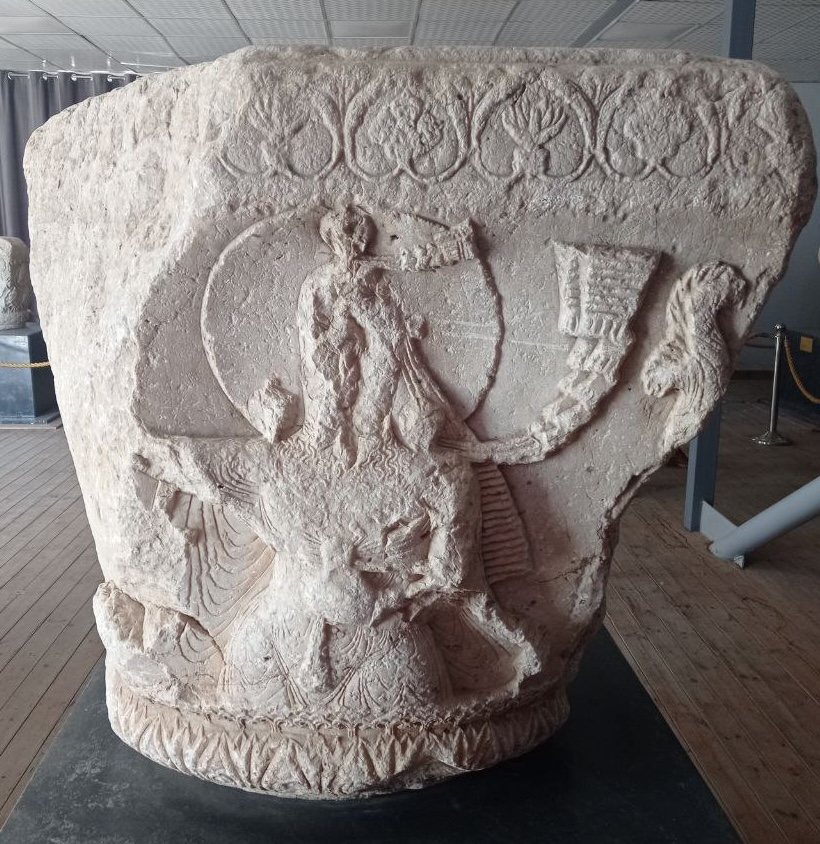Thread: The other day Gavin Lee @realgavinlee posted this in a tweet: "...bronze figurine of wild water buffalo... Hunan, middle reaches of Yangtze River...13-11 Cent. BC...
I only today saw what's on buffalo's back: a tiger!
This is very important...Here is why:

I only today saw what's on buffalo's back: a tiger!
This is very important...Here is why:


Both wild and domesticated water buffalos are seasonal breeders in most of their range, with the mating typically peaking in Oct/Nov... 



This means that they are a very good animal calendar markers for Oct/Nov...
In Mesopotamia, the climatic year is divided into hot/dry summer and cool/wet winter. Oct/Nov is when the winter starts...
In Mesopotamia, the climatic year is divided into hot/dry summer and cool/wet winter. Oct/Nov is when the winter starts...

So buffalos were used on Mesopotamian seals as positive symbols for winter (cool/wet season) linked with water (all the precipitation that feeds the water tables falls during winter season):
https://twitter.com/serbiaireland/status/1384603797113167872
Buffalo was used as an animal calendar marker for winter in India too. In India the year is also divided into two seasons, wet and dry...But in India, Oct/Nov is the beginning of the dry season... 

So buffalo symbol in India acquired a negative meaning and became a "buffalo demon" Mahishasura...The enemy of Devas (Gods, good guys). I talked about this buffalo demon in this post:
oldeuropeanculture.blogspot.com/2020/07/mahish…
oldeuropeanculture.blogspot.com/2020/07/mahish…

This opposite climates resulted in Devas being gods in India and demons in Mesopotamia/Persia...
https://twitter.com/serbiaireland/status/1401634864118616064
This is the climate in Hunan, China. You can see that the year is divided into hot and wet summer and cool and dry winter. And the mating season of the buffalos marks the beginning of winter again... 

So a buffalo could be used as an animal calendar marker for winter in China too...
But was it? Enters the tiger 🙂
But was it? Enters the tiger 🙂
That this buffalo is indeed an animal calendar marker for winter, can be seen from the fact that it has a tiger on it's back...
Cause guess who mates right after buffalos, during mid winter, Dec/Jan? Continental Eurasian tigers. Of the kind that also once lived in China...
Cause guess who mates right after buffalos, during mid winter, Dec/Jan? Continental Eurasian tigers. Of the kind that also once lived in China...

Which is why they are used as a symbol for winter...I already talked about tiger symbol in Chine in this post about the origin of the dragon - tiger symbol
oldeuropeanculture.blogspot.com/2021/08/tiger-…
oldeuropeanculture.blogspot.com/2021/08/tiger-…

Here tiger is opposed to the Chinese dragon, a positive symbol of water and prosperity. Remember that dragon is a pretty universal symbol of summer sun's heat...And summer in the area where Chinese culture originated is also the wettest part of the year...
oldeuropeanculture.blogspot.com/2021/08/chines…
oldeuropeanculture.blogspot.com/2021/08/chines…

So....Crouching tiger on a buffalo's back...Both animals mating in winter, both used as animal calendar markers for winter...Hmmm...
What do you think? Do we here have an example of a Bronze Age Chinese animal calendar marker? I think so...
That is if the animal on the buffalo's back is indeed a tiger. 🙂 I know that the Chinese sources say it's a tiger. But it looks very spotty to me...Just like a leopard...

That is if the animal on the buffalo's back is indeed a tiger. 🙂 I know that the Chinese sources say it's a tiger. But it looks very spotty to me...Just like a leopard...


But this changes nothing...Continental Eurasian leopards also mate during the winter, a bit later, at the end of winter, beginning of spring, Jan/Feb...
Which is why they were used as a symbol for winter (and spring)
Which is why they were used as a symbol for winter (and spring)
https://twitter.com/serbiaireland/status/1368629795421052931
So weather the cat on this buffalo's back is a tiger or a leopard, this ancient Chinese artifact could be a complex animal calendar marker...For winter...
More about animal calendar markers in China can be found in this thread
More about animal calendar markers in China can be found in this thread
https://twitter.com/serbiaireland/status/1370773038074052620
So, I think that now we have another, proof that the early Chinese didn't live and develop their culture in limbo. They also used animal calendar markers, just like all the other Eurasian and North African cultures from Neolithic onwards...
More about animal (and plant) calendar markers found in ancient cultures, start here oldeuropeanculture.blogspot.com/p/animal-solar… then check the rest of the blog posts I still didn't add to this page, and finally check my twitter threads I still didn't convert to blog post...I am 6 months behind now
• • •
Missing some Tweet in this thread? You can try to
force a refresh























